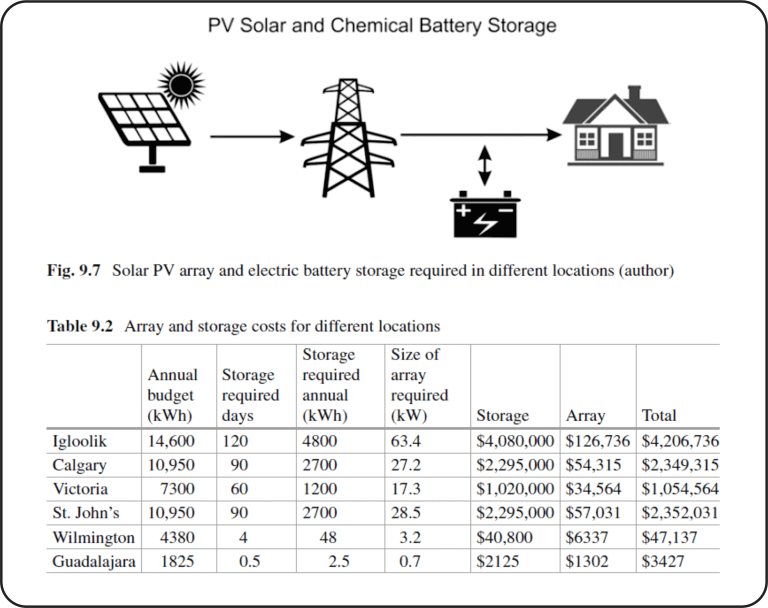From: The Renewable Energy Transition, Realities for Canada and the World – Springer Nature
Latitude and climate have a huge impact on the ability of a country to transition to renewable energy. In most cases, the energy density, low cost and storage characteristics of fossil fuels have resulted in large populations being established in regions of extreme climate where previously just handfuls of people lived off the land.
As we return to effectively living off the land – living off natural flows of energy and resources rather than mining the accumulated stocks – there will be a natural contraction of populations back to more hospitable regions where the energy available is more and the energy demand of living is less. (see table 9.2)
Below is a comparison table outlining the effect different factors have in determining how easily different nations might find the transition to renewable energy. The mountain of caveats and discussion which would normally accompany this table is not included for space considerations.
Finally, even countries with the highest ranking in this comparative exercise may, in the real world, have a very difficult time succeeding and possibly, even the lowest ranked might succeed and find the whole process rather unremarkable. Whatever the positive and negative surprises in the process, early in the next century certainly, and very possibly within 40 years, every nation will count itself as a largely renewable energy society.
Different Circumstances lead to Different Levels of Difficulty in Transitioning

In the above table, different countries, with very different circumstances, are compared to give an idea of the ease with which they could ultimately transition to renewable energy. The scales used are crude estimates and are not meant to represent linear relationships. Rather they are used to simply indicate whether a country is better positioned now than another for a given criteria.
Latitude matters. People in northern regions require more energy and energy collection is less productive than in southern, temperate regions. Also, in the north, maximum energy demand occurs in the winter while maximum energy production occurs in the summer. Hence vastly more storage capacity is required along with much larger energy harvesting infrastructure.

Biophysical economics can explain our current issues and prospects far better than the money metrics used in commercial economics. Sustainable societies have always looked at the world through the lens of physical reality rather than through the fog of false metrics of various ideologies whether they are based in religious or commercial economics doctrine.
Growth pays negative dividends in a finite planet whose natural systems are being depleted.

